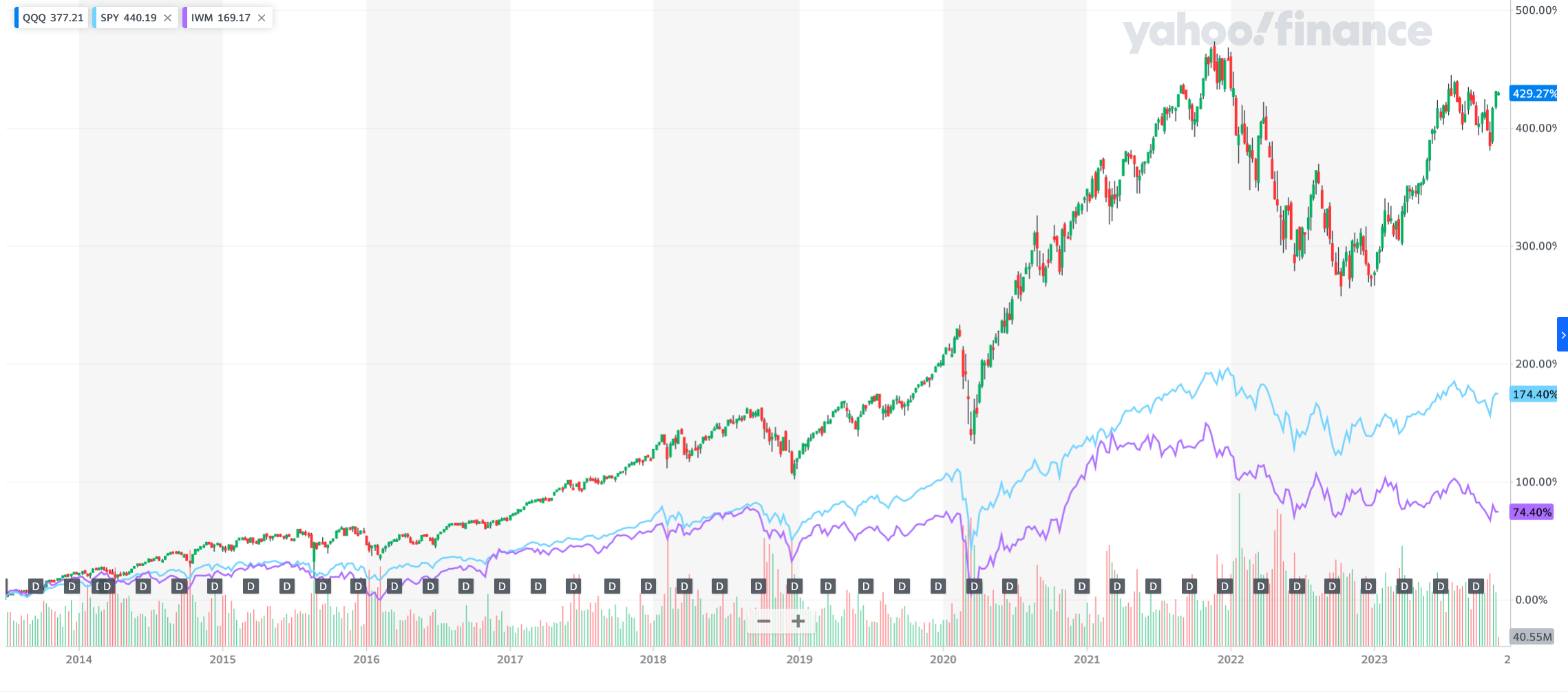QQQ Annual Returns: Small Progress, Big Wins

Your Best Tech ETF for Long Term
In the world of money matters, like with QQQ Annual Returns, things often go against what we might expect. Instead of relying on a few big wins, success usually comes from making lots of small progress. It’s a bit like trying to lose weight—many aim to drop 5kg or 10kg in a month or two, but experts say a healthier pace is around 1-1.5kg each month. This idea connects to investing, urging us to appreciate gradual gains and trust smart choices over quick moves. The allure of “quick weight loss” schemes has proven to be somewhat temporary phenomena or outright frauds.
The pattern of “opposite the obvious” in the financial markets is – “Keep your winners, get rid of your losers.” Yes, what kills the performance of most traders is their unwillingness to realize losses (keeping losers) and too happy to realize profits (getting rid of winners).
QQQ Historical Performance: Beating the Benchmark
With that in mind, let’s take a look at QQQ ETF’s historical performance versus other widely held ETFs
like SPY (S&P 500 ETF) and IWM (Russell 2000 ETF).
Over the last 10 years, QQQ has returned 429%, SPY 174%, and IWM 74%. Those returns do not include dividends, but the dividend yields are not going to change the big picture – QQQ has undeniably outperformed most other major indexes not only on a 10-year basis but also on a 3-year and 1-year basis (not pictured but easy to check).
So far, most people will agree with this fact, and it is a fact that QQQ has been a winner! Next, we will ask if the present is an excellent time to be long equity exposure.
Again, returning to the “opposite of the obvious” pattern, Warren Buffett says that the secret to successful investing is to “conduct your affairs opposite to how others do.” In other words, a successful investor should be looking to buy equities when most other investors are looking to sell and sell equities when most others are looking to buy.
QQQ vs. Consumer Confidence
How does the current market environment compare to that in the past? Let’s take a look at the NASDAQ-100 versus US Consumer Confidence:
To be sure that you interpret the chart above correctly, we will explain it. The NASDAQ-100 Index is in blue, and levels are indicated on the right axis. The current level is 15812. US Consumer Confidence is green, and levels are shown on the left axis.
As you see, US Consumer confidence is near a 20-year low at 63,80. It’s not an absolute low, but it’s not far. Also, the present level of consumer confidence is close to the levels of the Global Financial Crisis (2008).
It would appear that at present, most investors are risk averse and looking to sell, not buy – so if we follow the advice of Warren Buffett, we should do the opposite and look to buy!
There is only one thing left to check. Is the price we pay for QQQ of roughly 385 USD or 15800 in NASDAQ- 100 reasonable?
Let’s see the historical PE ratio for the NASDAQ-100 Index according to Barrons.com:
| Date | PE Ratio |
| 30.6.2020 | 31,19 |
| 31.12.2020 | 39,72 |
| 30.6.2021 | 37,70 |
| 31.12.2021 | 38,00 |
| 30.6.2022 | 24,86 |
| 31.12.2022 | 23,72 |
| 30.6.2023 | 31,31 |
| 14.11.2023 | 32,52 |
| Average | 32,37 |
Key Takeaway
In conclusion, analyzing the table reveals that both NASDAQ-100 and QQQ ETF currently boast a PE ratio of 32.52, slightly exceeding the 3-year average of 32.37. While a lower PE ratio is preferred, following Warren Buffet’s wisdom emphasizes investing in companies with above-average potential at an average valuation.
QQQ ETF has been an incredibly profitable investment. The reason for that is that the companies that comprise the holdings of the ETF are some of the best businesses in the world. Current valuations align with historical averages, reinforcing our confidence in the sector’s potential.
In navigating the dynamic landscape of financial markets, recognizing the enduring value in these investments becomes paramount for long-term success.
Get the trading edge you need in today’s markets – sign up for our monthly newsletter featuring in-depth expert analysis, hot market insights, and exclusive trading strategies.


